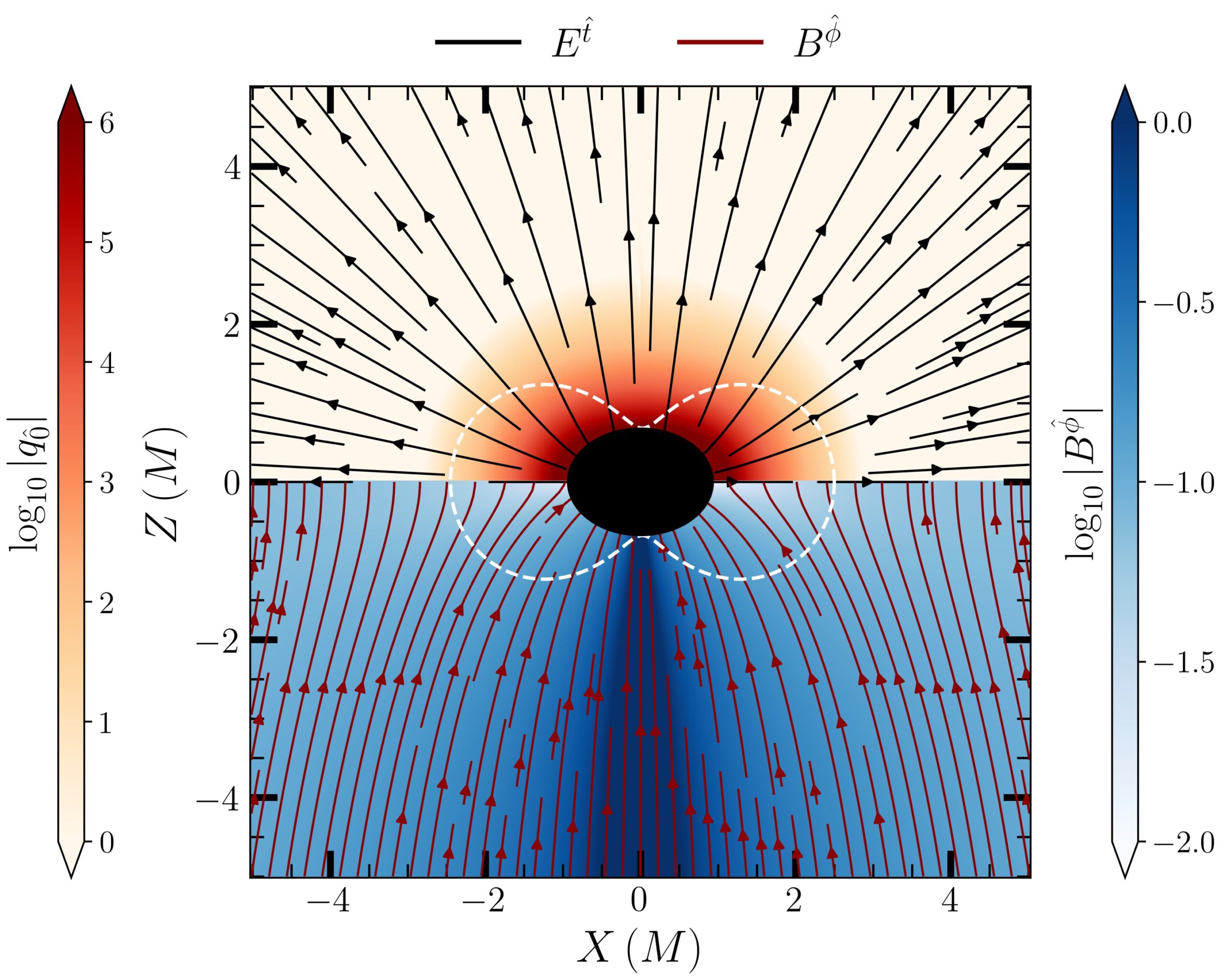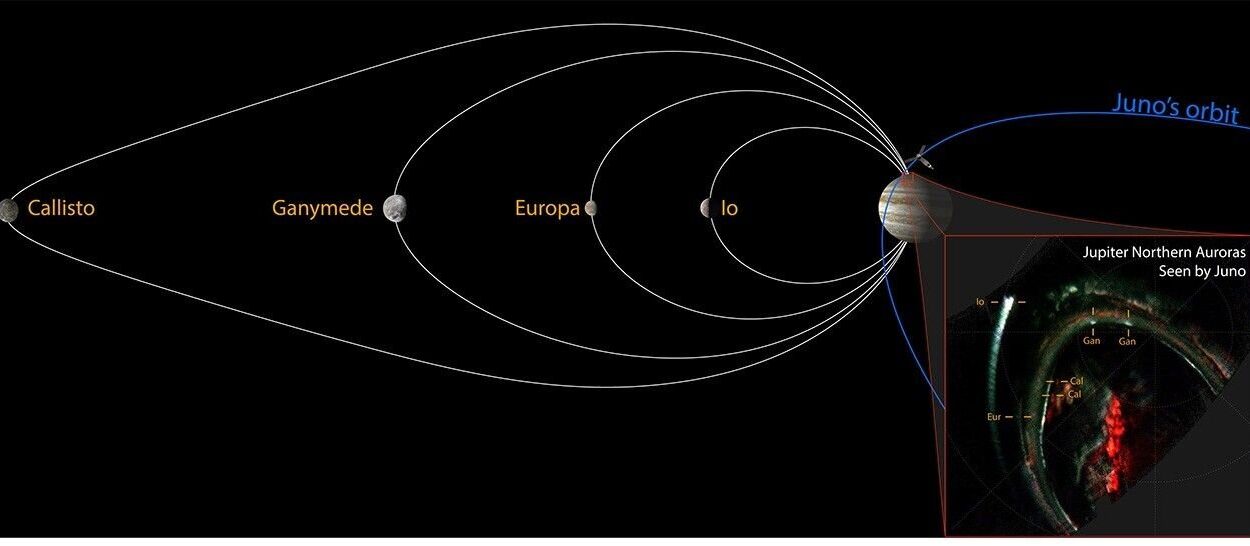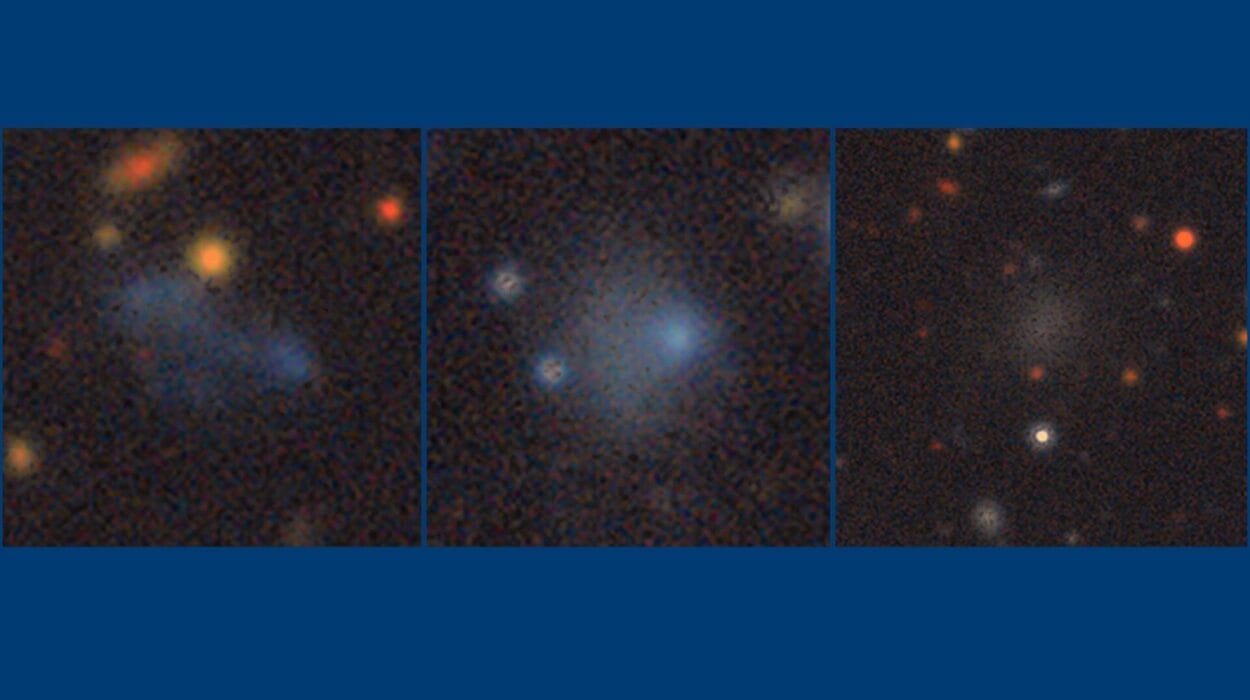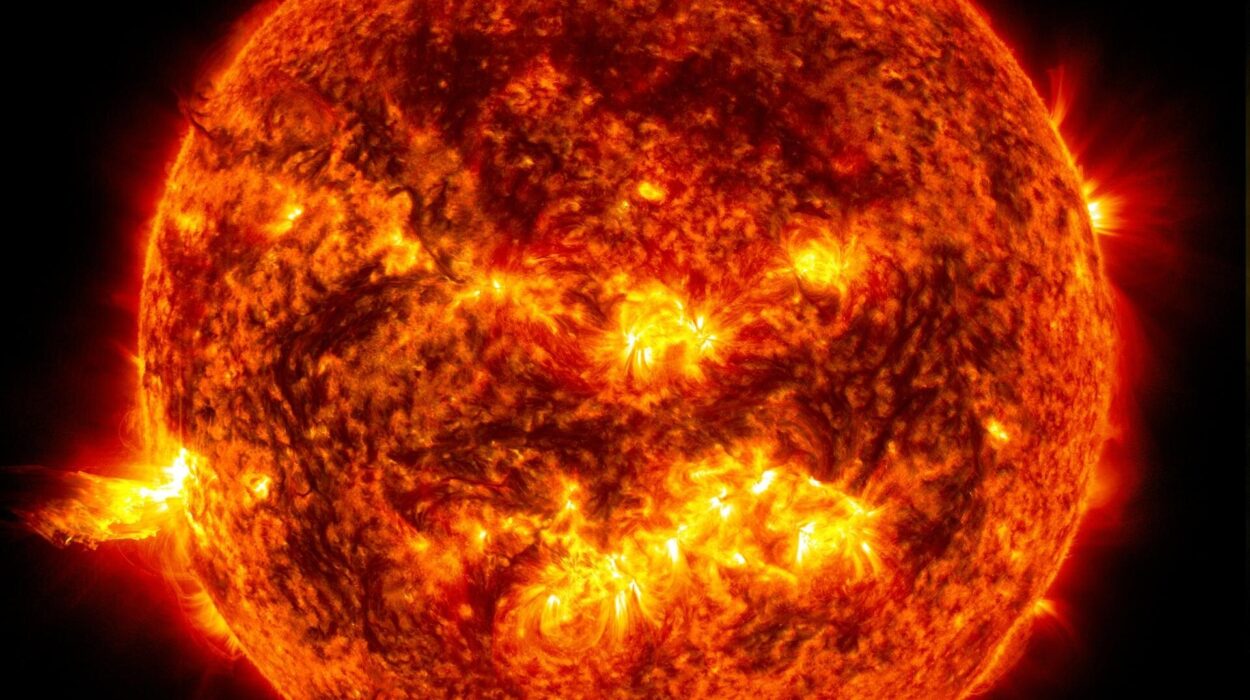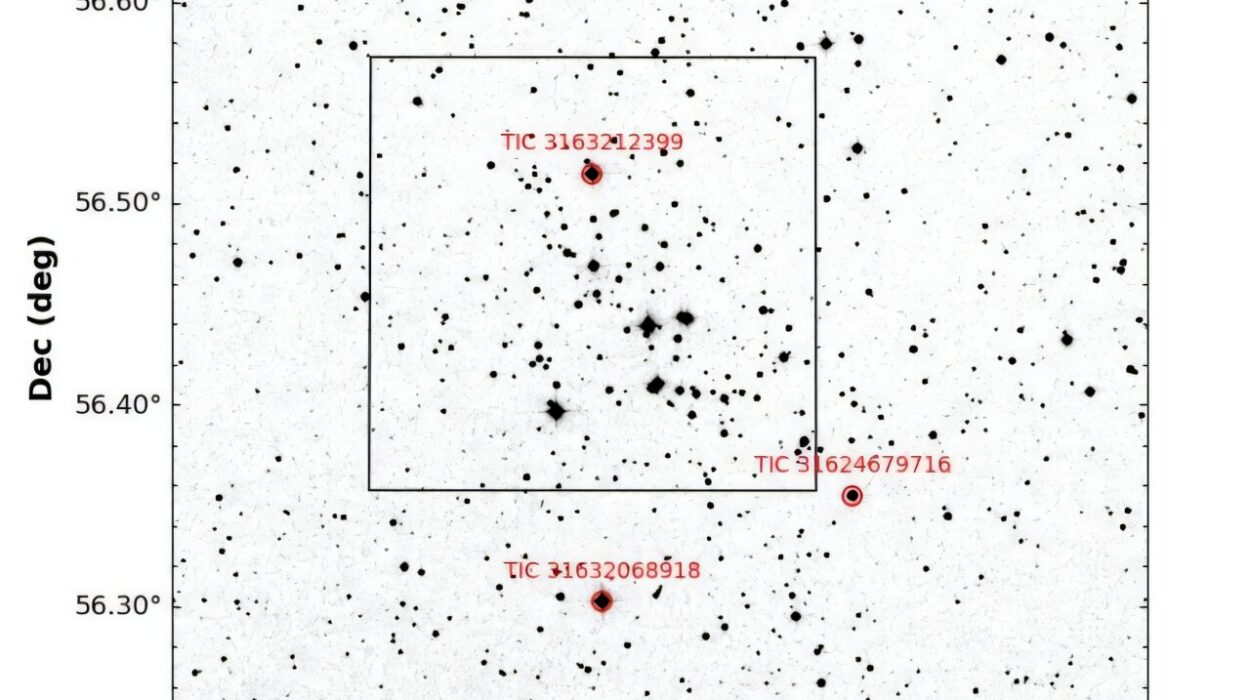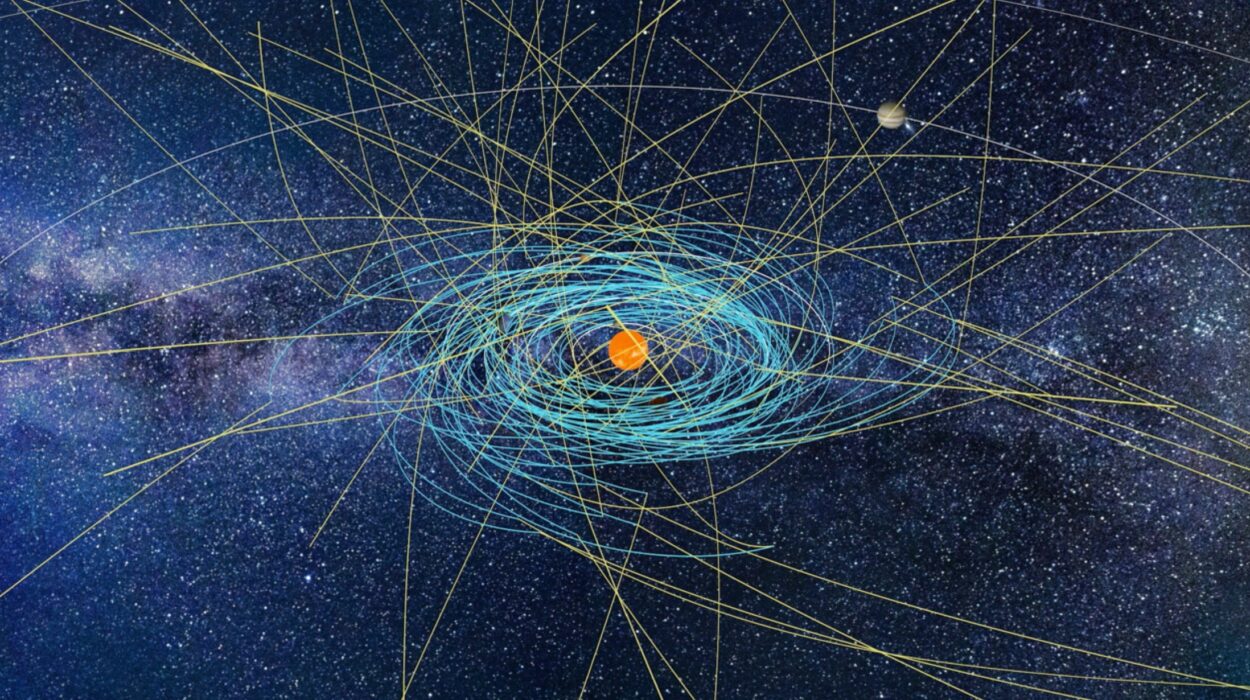In September 2015, the universe whispered — and we heard it. For the first time in history, scientists detected the faint, rhythmic tremor of spacetime itself: gravitational waves. These waves, rippling through the cosmos at the speed of light, were born from the cataclysmic merger of two black holes more than a billion light-years away. It was a discovery that confirmed one of Einstein’s boldest predictions and opened a brand-new way of observing the universe.
Gravitational waves are not like sound or light. They are distortions of the very fabric of reality — gentle yet profound warps in spacetime caused by massive cosmic events. When enormous bodies like black holes or neutron stars accelerate or collide, they send out ripples that stretch and squeeze space itself. These waves carry with them stories of creation and destruction, of cosmic dances too violent for light to escape, and of gravity behaving in ways we are only beginning to comprehend.
But now, researchers are taking the next step. They are not just listening to these waves — they are finding new ways to understand them.
Seeing Gravity Through a New Lens
Gravity is one of nature’s four fundamental forces, yet it is also the most mysterious. While electromagnetism and nuclear forces can be measured and visualized easily, gravity seems elusive, almost ghostly. We feel its presence everywhere, yet it refuses to yield its full secrets.
Albert Einstein’s general theory of relativity gave us the most elegant and successful description of gravity yet: rather than being a force in the traditional sense, gravity is the curvature of spacetime caused by mass and energy. The greater the mass, the greater the curvature — and it’s this curvature that tells planets how to orbit stars, black holes how to merge, and light how to bend around galaxies.
But in the extreme conditions near black holes — where spacetime is twisted almost beyond recognition — gravity behaves in deeply non-linear ways. Its equations become so complex that even supercomputers strain to solve them. These “strong-field” regions are the ultimate laboratories for testing the limits of Einstein’s theory.
Now, a team of researchers at the California Institute of Technology (Caltech) has found a way to simplify the chaos — by reimagining gravity through the language of another familiar force: electromagnetism.
Bridging Two Great Forces
Electromagnetism and gravity have always stood on opposite sides of physics. One governs the behavior of charged particles, electricity, and magnetism — the other shapes the motion of planets, stars, and galaxies. Yet, the mathematical structures describing them share intriguing similarities.
Dr. Elias R. Most and his colleagues at Caltech wondered — what if gravity could be represented using Maxwell’s equations, the elegant mathematical framework that describes electric and magnetic fields? Could the same equations that explain lightning, radio waves, and magnetism also reveal how gravity ripples through spacetime?
Their recent study, published in Physical Review Letters, explores exactly that. By reframing Einstein’s notoriously complex equations in terms more familiar to electromagnetism, the researchers created a new window into the behavior of gravitational fields — especially during violent events like black hole mergers.
“Our research was inspired by two things,” Most explained. “We had already developed a deep understanding of how electric and magnetic fields behave around black holes. At the same time, we realized gravity has always been somewhat mysterious — lacking the ability for easy visualization, unlike electromagnetic fields.”
Their idea was as radical as it was elegant: to use Maxwell-like equations to describe how gravity flows, fluctuates, and interacts — turning the invisible geometry of spacetime into something that could be visualized and analyzed with tools already familiar to physicists.
A New Way to Simulate Spacetime
Simulating Einstein’s equations of general relativity has always been one of the most demanding challenges in science. The mathematics of curved spacetime, especially when two massive black holes spiral toward each other, is extraordinarily complex. For decades, physicists have relied on numerical simulations — vast computational models — to predict the patterns of gravitational waves produced by such events.
What Most and his team have done is to reinterpret these simulations in a new way. Instead of describing spacetime curvature through the dense language of tensor equations, they translated it into terms of gravitational “electric” and “magnetic” fields — analogues of those found in electromagnetism.

“The main novelty we brought to the table,” said Most, “was the ability to completely reinterpret these simulations in ways analogous to electrodynamics.”
In doing so, they discovered something astonishing: general relativity can, in certain conditions, be expressed using the same mathematical framework as electromagnetism. Gravity, it seems, might not be as alien as we thought.
This fresh approach doesn’t replace Einstein’s theory — it enhances it. By making gravity more intuitive, it allows scientists to explore previously hidden details of spacetime dynamics, including how gravitational waves form, interact, and evolve.
When Spacetime Becomes Turbulent
Perhaps the most fascinating outcome of this new research is what it reveals about nonlinear gravity — the regime where spacetime behaves more like a stormy sea than a calm pond.
In simple conditions, gravitational waves travel cleanly through space, much like beams of light. But when gravity is strong — near merging black holes, for instance — these waves can begin to interact with one another. They can collide, twist, and even create turbulence-like patterns in spacetime.
“In essence, gravitational waves are unlike regular beams of light,” said Most. “When they pass through each other, they can interact — and this interaction can resemble turbulence in the atmosphere.”
Turbulence is a well-known phenomenon in fluid dynamics and electromagnetism, but describing it mathematically in the realm of gravity has long been nearly impossible. Most’s team found that the same mathematical tools used to study magnetic turbulence could be applied to gravitational turbulence — a breakthrough that may unlock entirely new ways to study the cosmos.
It’s as if the researchers have found a universal language, one that connects the invisible storm of spacetime with the more familiar patterns of magnetic fields and waves.
The Power of Reimagining
Science often advances not through new discoveries, but through new ways of seeing. By reinterpreting Einstein’s ideas through the lens of Maxwell’s equations, the Caltech researchers have provided a bridge between two great pillars of physics.
This new framework allows scientists to visualize gravitational dynamics as if they were watching fields of energy shift and flow — making it easier to understand complex interactions that once seemed beyond reach. It could lead to improved models of black hole mergers, more accurate predictions of gravitational wave signals, and even new insights into the unification of forces — one of the grandest goals of modern physics.
And beyond its technical brilliance, this approach rekindles something more human: wonder. It reminds us that nature’s laws, no matter how abstract, are deeply interconnected. The forces that light up the stars are not so different from those that shape the space around them.
The Future of Gravitational Wave Science
The work by Most and his team is only the beginning. Their simulations are helping physicists better understand where Einstein’s theory might break down — and what might come next.
In the coming years, researchers plan to use this framework to explore the turbulence-like aspects of gravitational waves in greater detail. They hope to identify new signatures that could one day be detected by gravitational wave observatories like LIGO, Virgo, and KAGRA.
Each new detection offers a message from the universe — an echo from a distant cosmic collision. As our instruments grow more sensitive and our theories more refined, we are beginning to read those messages with greater clarity.
The universe, it turns out, is not silent. It sings — in ripples of spacetime, in waves of energy, in fields that connect everything from atoms to galaxies.
Listening to the Universe’s Deepest Notes
To understand gravitational waves is to hear the heartbeat of creation itself. They tell us that space and time are not rigid but alive, flexing and trembling under the weight of cosmic drama.
By translating gravity into the language of electromagnetism, scientists are not just solving equations — they are bringing the invisible into view. They are turning the cold geometry of spacetime into something almost tangible, something we can picture and feel.
The discovery of gravitational waves was one of humanity’s greatest scientific triumphs. Now, with this new perspective, we are entering a deeper chapter — one where gravity and light speak the same language, and where the universe reveals that its greatest mysteries are often reflections of the same elegant patterns.
In the end, it is all connected — the magnetism that guides a compass, the gravity that holds galaxies together, and the waves that ripple across the universe. We are part of this grand cosmic conversation, listening ever more closely as science teaches us not just how the universe works, but how it feels.
And in that sense, every gravitational wave we detect is more than a scientific event — it is a note in the symphony of existence, echoing through the vast and beautiful silence of space.
More information: Siddharth Boyeneni et al, Unveiling the Electrodynamic Nature of Spacetime Collisions, Physical Review Letters (2025). DOI: 10.1103/995s-wxl7. On arXiv: DOI: 10.48550/arxiv.2504.15978
